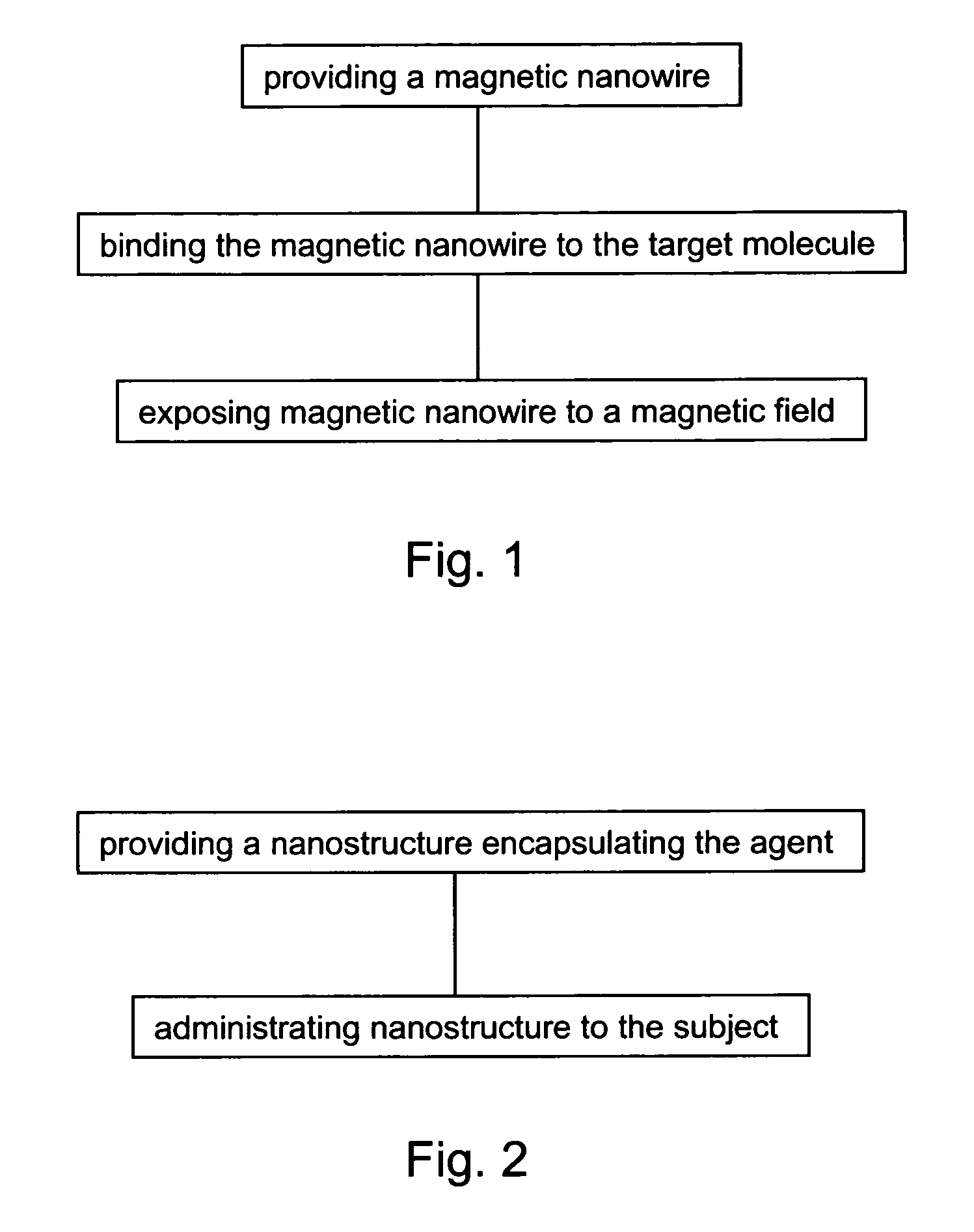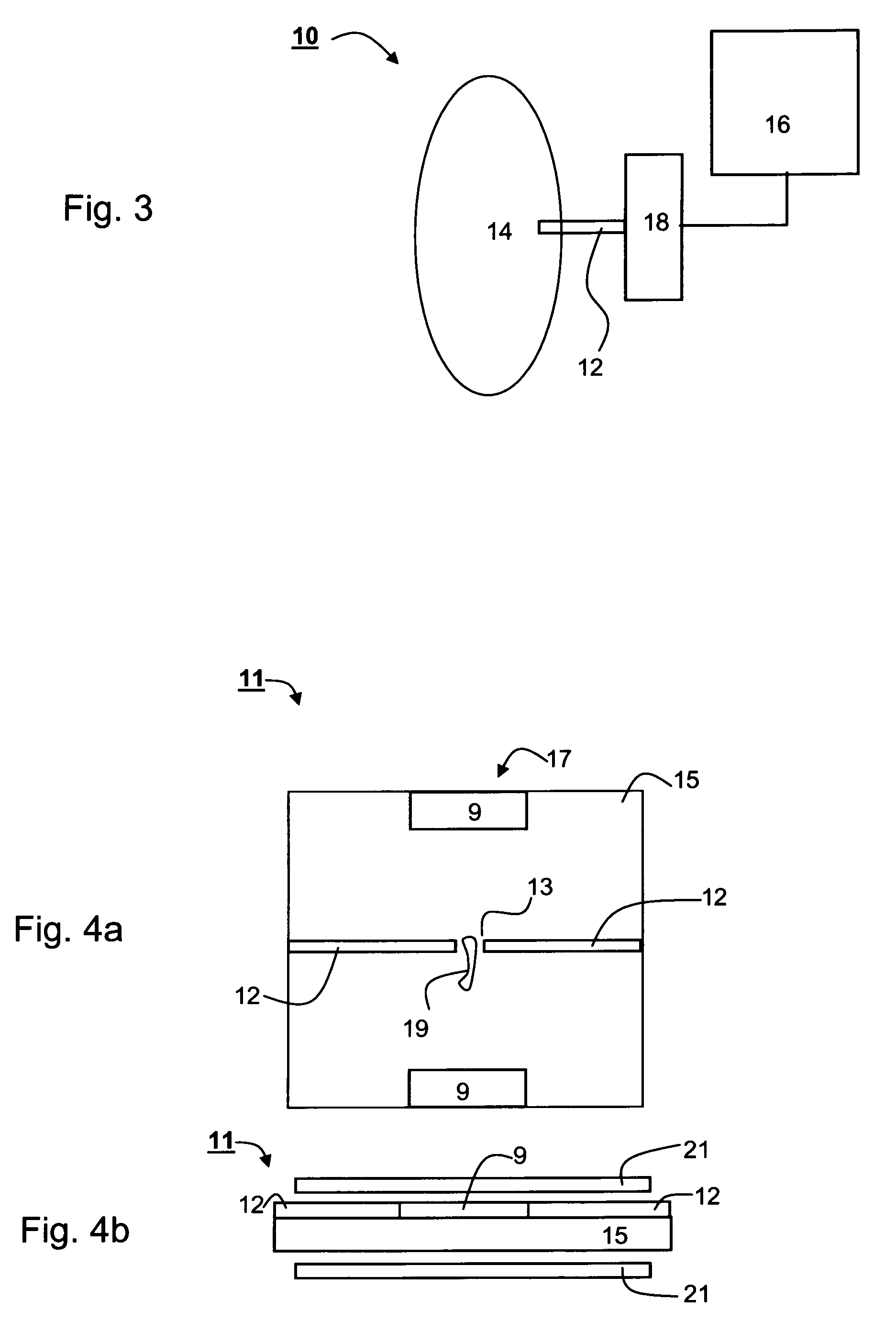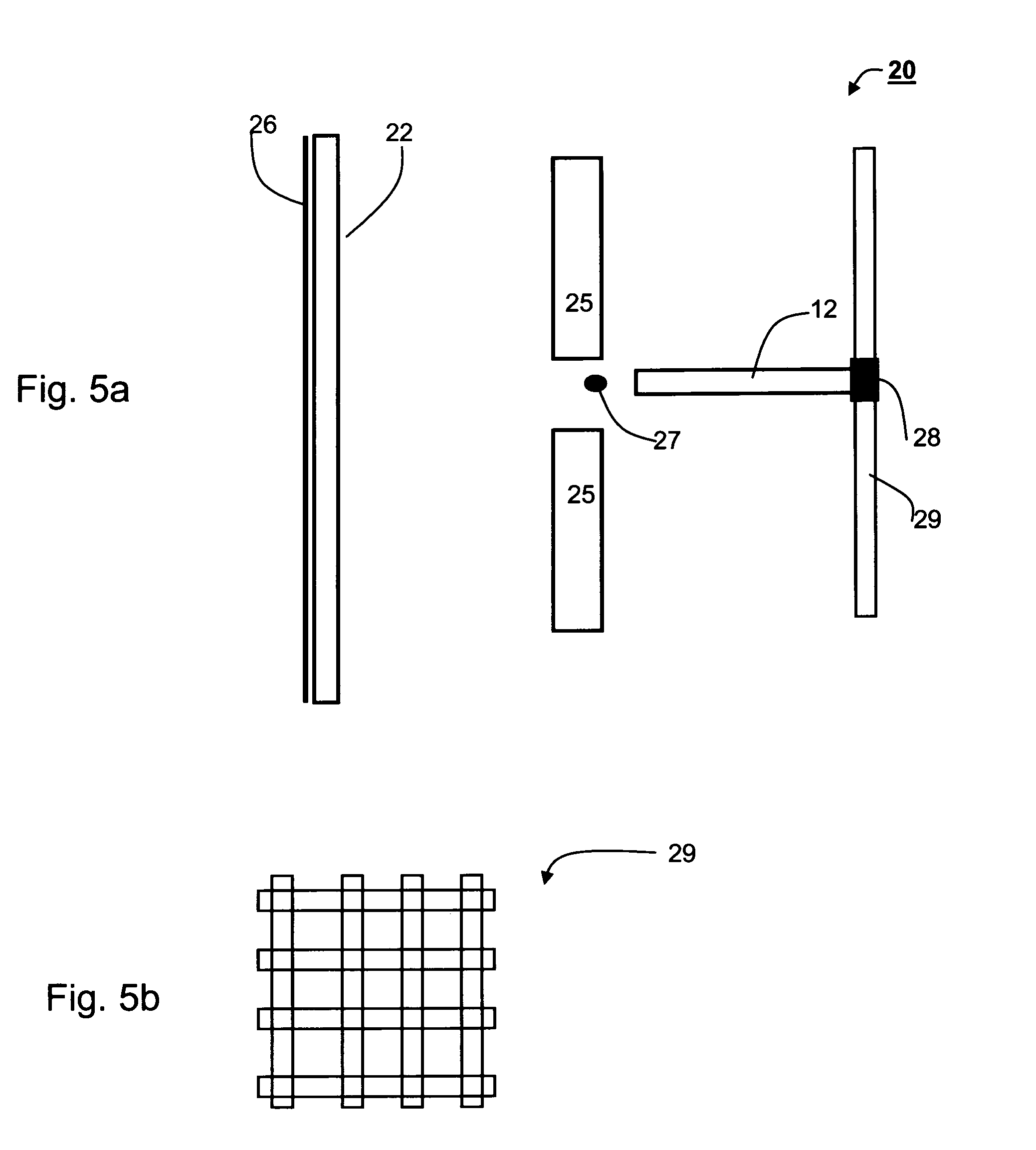Peptide nanostructures encapsulating a foreign material and method of manufacturing same
a technology of nanostructures and foreign materials, applied in the field of peptide nanostructures, can solve the problems of inefficiency, difficult and inefficient carbon nanotube filling process, and inability to efficiently open and fill carbon nanotubes with foreign materials
- Summary
- Abstract
- Description
- Claims
- Application Information
AI Technical Summary
Problems solved by technology
Method used
Image
Examples
example 1
Self-assembled Aromatic Peptides Can be Used to Cast Metal Nanowires
[0346]Materials and Experimental Procedures
[0347]Material—Diphenylalanine peptides were purchases from Bachem (Bubendorf, Switzerland). Fresh stock solutions were prepared by dissolving lyophilized form of the peptides in 1,1,1,3,3,3-Hexafluoro-2-propanol at a concentration of 100 mg / ml. To avoid any pre-aggregation, fresh stock solutions were prepared for each and every experiment.
[0348]Transmission Electron microscopy—The peptides stock solutions were diluted to final concentration of 2 mg / ml in double distilled water. Then a 10 μl aliquot of 1 day-aged solution of peptide was placed on 200 mesh copper grid, covered by carbon stabilized Formvar film. After 1 minute, excess fluid was removed. For negative staining experiments, the grid was stained with 2% uranyl acetate in water and after two minutes excess fluid was removed from the grid. Silver-filled nanotubes were imaged without staining. Samples were viewed us...
example 2
[0356]Tubular nanostructures were formed from naphthylalanine-naphthylalanine (Nal-Nal) dipeptides, in accordance with preferred embodiment of the present invention. The Chemical structure of the Nal-Nal dipeptide is schematically shown in FIG. 20.
[0357]Fresh stock solutions of Nal-Nal dipeptides were prepared by dissolving lyophilized form of the peptides in 1,1,1,3,3,3-hexafluoro-2-propanol (HFIP, Sigma) at a concentration of 100 mg / mL. To avoid any pre-aggregation, fresh stock solutions were prepared for each experiment.
[0358]The peptides stock solutions were diluted into a final concentration of 2 mg / mL in double distilled water, then the samples were placed on 200 mesh copper grid, covered by carbon stabilized formvar film. Following 1 minute, excess fluid was removed and the grid was negatively stained with 2% uranyl acetate in water. Following 2 minutes of staining, excess fluid was removed from the grid. Samples were viewed in JEOL 1200EX electron microscope operating at 80 ...
example 3
[0360]Tubular and planar nanostructures were formed from by four different dipeptides, in accordance with preferred embodiment of the present invention.
[0361]The following dipeptides were used: (Pentafluro-Phenylalanine)-(Pentafluro-Phenylalanine), (Iodo-Phenylalanine)-(Iodo-Phenylalanine), (4-Phenyl phenylalanine)-(4-Phenyl phenylalanine) and (P-nitro-Phenylalanine)-(P-nitro-Phenylalanine).
[0362]For the first two dipeptides [(Pentafluro-Phenylalanine)-(Pentafluro-Phenylalanine) and (Iodo-Phenylalanine)-(Iodo-Phenylalanine)] fresh stock solutions were prepared by dissolving lyophilized form of the peptides in DMSO at a concentration of 100 mg / mL.
[0363]For the third and fourth dipeptides [(4-Phenyl phenylalanine)-(4-Phenyl phenylalanine) and (P-nitro-Phenylalanine)-(P-nitro-Phenylalanine)], fresh stock solutions were prepared by dissolving lyophilized form of the peptides in 1,1,1,3,3,3-hexafluoro-2-propanol (HFIP, Sigma) at a concentration of 100 mg / mL. To avoid any pre-aggregation,...
PUM
| Property | Measurement | Unit |
|---|---|---|
| diameter | aaaaa | aaaaa |
| length | aaaaa | aaaaa |
| temperature | aaaaa | aaaaa |
Abstract
Description
Claims
Application Information
 Login to view more
Login to view more - R&D Engineer
- R&D Manager
- IP Professional
- Industry Leading Data Capabilities
- Powerful AI technology
- Patent DNA Extraction
Browse by: Latest US Patents, China's latest patents, Technical Efficacy Thesaurus, Application Domain, Technology Topic.
© 2024 PatSnap. All rights reserved.Legal|Privacy policy|Modern Slavery Act Transparency Statement|Sitemap



